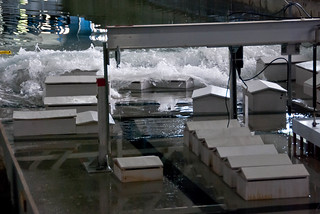 Many beaches along the Pacific Northwest coast have experienced increased erosion since the late 1800s.
Many beaches along the Pacific Northwest coast have experienced increased erosion since the late 1800s.
So says the U.S. Geological Survey, which is working with Oregon State University on a study that’s analyzing shoreline changes in the nation’s coastal regions. The agency made the discovery while examining coastal erosion and land loss.
The groups found that since the late 1800s, most beaches are either stable or adding a little bit of sand. However, 13 of 17 beach “littoral cells,” or beach stretches between rocky headlands and major inlets, have either eroded or built up less sand than in the past. The hardest hit littoral cells include the Neskowin, between Cascade Head and Pacific City, and the Beverly Beach littoral cell between Yaquina Head and Otter Rock. Shoreline change rates at Beverly Beach have averaged more than one meter of erosion a year since the 1960s.
The findings could provide baseline data that will help researchers analyze future climate change impacts
There’s also a pronounced difference in the effects faced between Oregon and its neighbor to the north.
“In a general sense, Oregon has faced much more erosion in the short term than has southwest Washington, which has seen more accretion as a result of sediments from the Columbia River and jetties at the mouth of the Columbia and at Gray’s Harbor,” said Peter Ruggiero, an associate professor in OSU’s College of Earth, Ocean, and Atmospheric Sciences.




